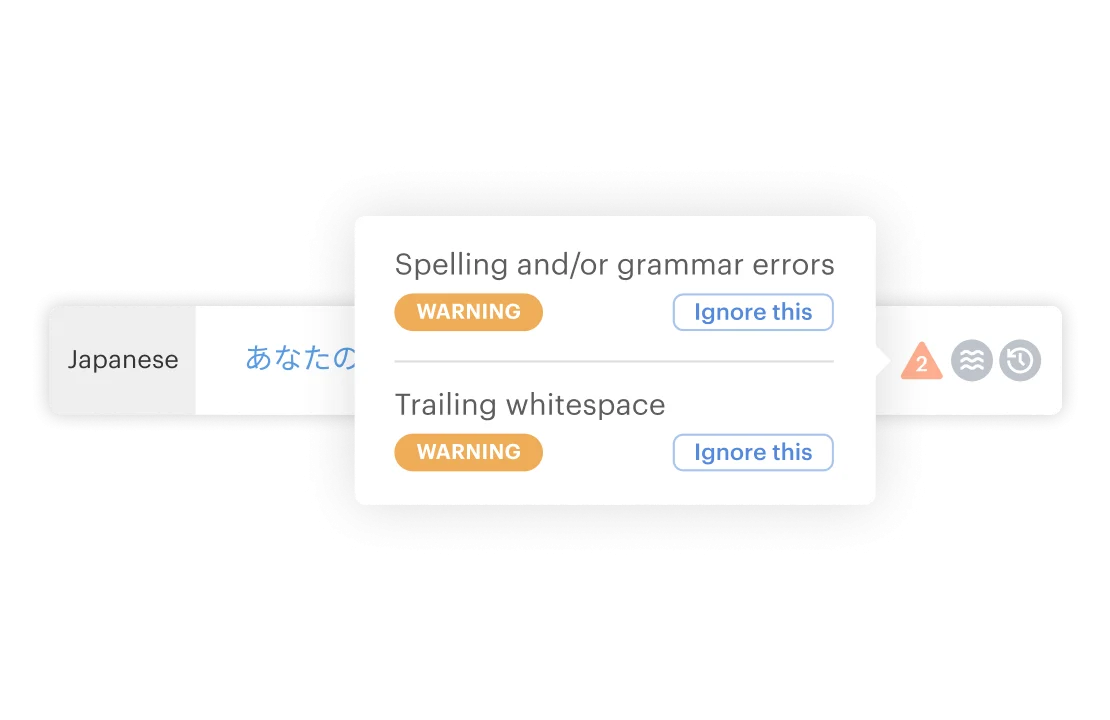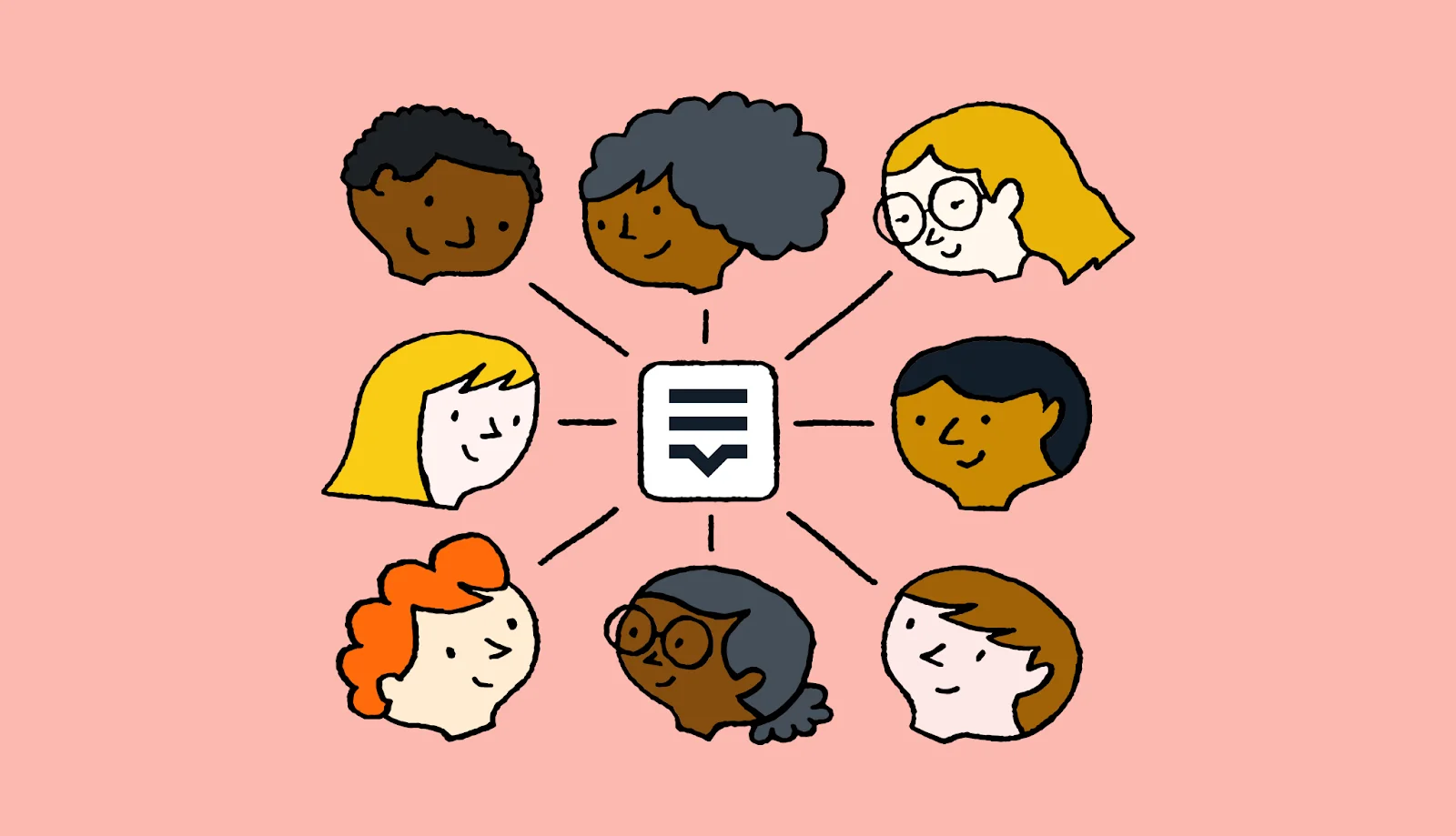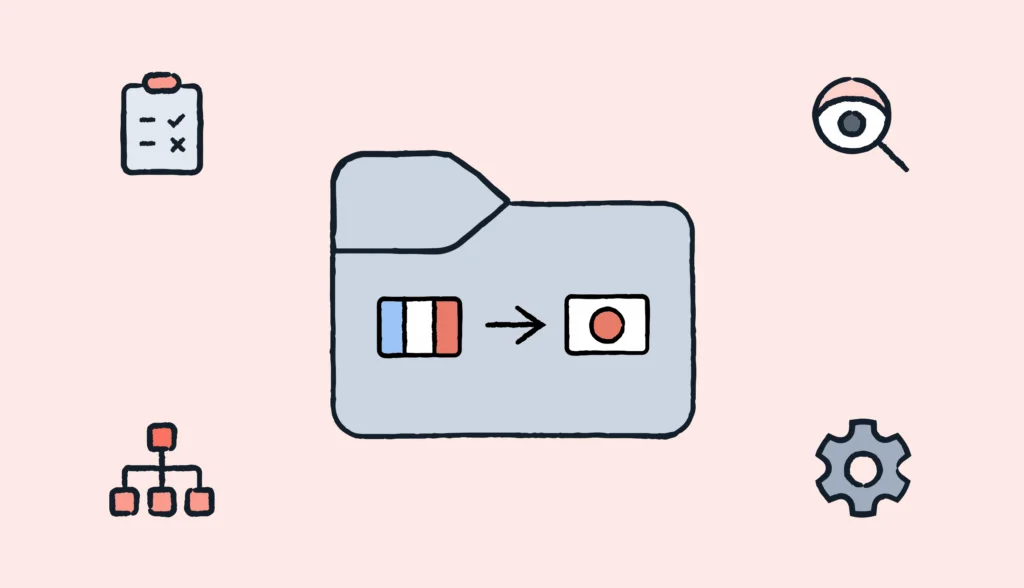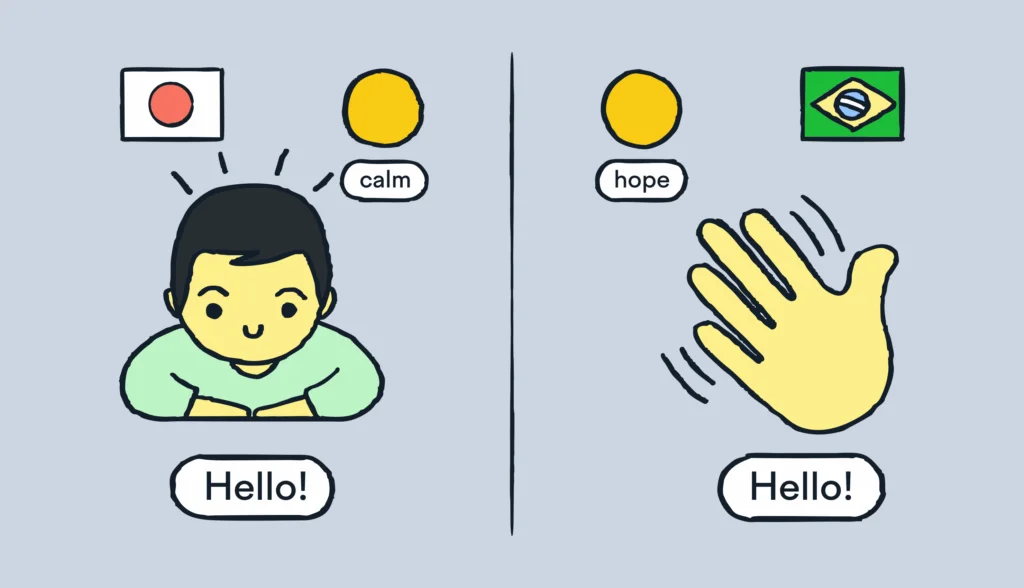Each market needs its own subject matter expert, native translator, and quality reviewer. You’ll also need someone to manage everything, this is where localization management comes in, along with a designer or two, developers, and more.
- Centralized localization team
A centralized localization team is located entirely in-house, within a single department. All team members work in the same location, and follow the same guidelines and procedures.
This model simplifies communication and gives you better control over quality and consistency. If you’re a small company with fewer resources or limited target languages, a central localization team, possibly supported by external localization services, may be a good choice.
Benefits:
- Streamlined communication
- Unified processes
- Clear ownership
Challenges:
- Potential for bottlenecks
- Limited scalability
- Lack local market expertise
- Decentralized localization team
A decentralized localization team is spread across different teams, such as marketing, and product development. Every department is in charge of a specific section of the localization process.
Since each department is only responsible for its own localization efforts, they can work alone and make decisions quickly. As a result, they’re often more agile and responsive to local market needs.
This model works well for larger companies with diverse product lines or target markets.
Benefits:
- Deeper product and market knowledge
- Greater autonomy and ownership
- Faster results
Challenges:
- Inconsistent processes or workflow
- Overlapping tasks
- Difficulty maintaining a consistent voice
- Hybrid localization team
Hybrid localization teams combine both centralized and decentralized models. They have a core localization team, which manages the localization strategy, and individual teams in different departments or regions that handle local market adaptation.
This model is perfect for large companies operating in multiple regions, as it has the best of both worlds — global consistency and local expertise.
Benefits:
- Flexibility
- Scalability
- Deeper insight into local markets
Challenges:
- Complicated coordination
- Conflicting priorities
- Unclear communication

- Outsourced localization team
Outsourced localization teams are external vendors or agencies hired to handle all localization tasks. They specialize in translation, cultural adaptation, localization testing, and desktop publishing.
Having an outsource localization team can help you quickly scale and access specialized talent without building an in-house team.
Companies with limited internal resources or those looking to quickly expand into new markets may benefit from this model.
Benefits:
- Cost-effective for smaller project
- Access to specialized expertise
- Fast scaling
Challenges:
- Less control over quality
- Communication barriers
- Inconsistent brand voice
- Community-led localization team
A community-led localization team is a unique model that leverages volunteers to translate and adapt content. These volunteers usually love the product or service and are willing to help the company.
Sometimes there are paid staff to coordinate projects, check quality, and engage with the community. The staff makes sure the translations are accurate and consistent, and supports the volunteers.
A successful example of a community-led localization team is Any.do, a to-do list app. Any.do has a community of over 1,000 translators who have helped the app be translated into over 70 languages.
Benefits:
- Cost-effective
- Authentic translation
- Increased user engagement
Challenges:
- Quality control
- Meeting deadlines
- Complex project management
Lokalise brings all stakeholders under one roof
There are so many moving parts in the localization process. How can you ensure your team is aligned, on track, and consistent in every market? Lokalise can help.
Streamlined communication and project management
For years, project managers used spreadsheets, emails, phone calls, and other tools to do the localization process. Now, you can use Lokalise instead.
Lokalise gives your localization project manager a unified communication tool to send content to your translators and track their progress.
Your content team may also work closely with your localization project manager to organize, prepare, and import content into Lokalise while the content is kept for translators and provided by designers.
Lokalise will automatically route any changes made during agile development processes into the translation workflow for updates and changes.
When Revolut, a Fintech company, faced challenges of manual processes and managing multiple languages, they turned to Lokalise.
We provided a centralized hub for all their translation projects, making it easier to find and manage their translation files and resources. Moreover, Lokalize automated many of their manual tasks, further streamlining workflow for Revolut.

As a result, Revolut saved 100+ hours per week on localization tasks, improved collaboration between teams, and achieved a 100%+ increase in user growth.
Developer-friendly localization solutions
Lokalise provides localization solutions for issues specific to software and technology. Our solution makes it easier and faster for developers and translators to work together to create the best user experience in all languages.
For example, your developers can tag individual content elements in their code. This will show up in changes and updates to your content and product. You can also use 40+ integrations, including GitHub, GitLab, Webhooks, and more.
MWM, a music mobile app developer, had trouble localizing because it was hard to manage many apps and update them often. Lokalise empowered their developers with a streamlined and efficient localization workflow.
Now, their developers can easily export translations into the formats they need. They can also access translations to make changes or updates, even after initial implementation.
The search feature also lets developers quickly find and fix problems when they notice issues in their apps.
Centralized quality assurance
Lokalise serves as a single source of the truth, eliminating version control issues. By centralizing all translation files and assets in one place, there’s no longer a problem of having multiple versions in emails or shared drives.
Translators, reviewers, and project managers can easily work together, leave comments, and fix problems right within the platform.
Lokalise’s Quality Assistance (QA) feature also offers automated QA checks, automatic translation memory, automatic translation suggestions, and built-in spelling and grammar checks.
Companies like Rydoo, have taken advantage of these features to perfect translations before they’re released. This has improved collaboration, both between Rydoo’s team members and between their internal team and their freelance translators.

Localization simplified with Lokalise
Building a great localization team can require a little work, but the effort is worth it. Once your team is up and running, support them with a translation management system, like Lokalise, to ensure effective and aligned communication and task management.
Streamline your global expansion — Book a demo with a Lokalise specialist or sign up for a free trial.





